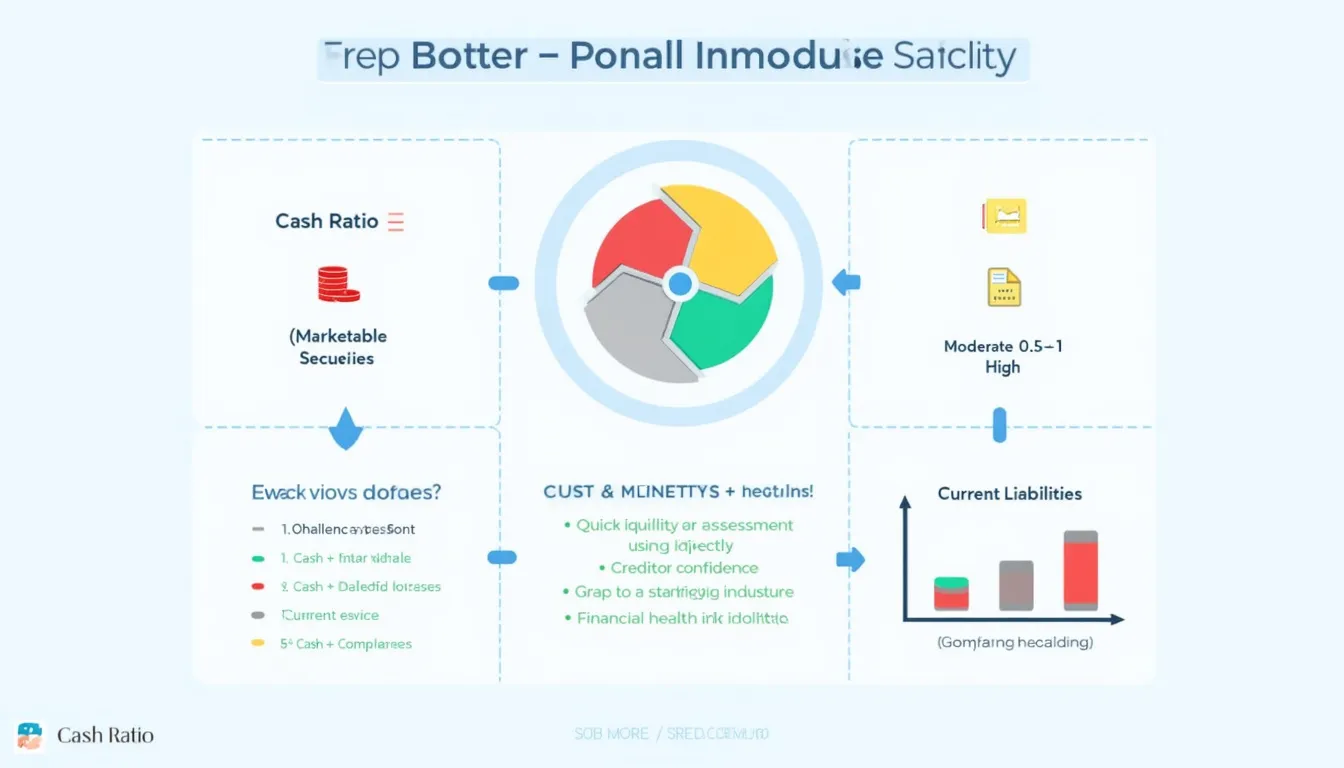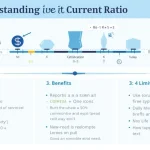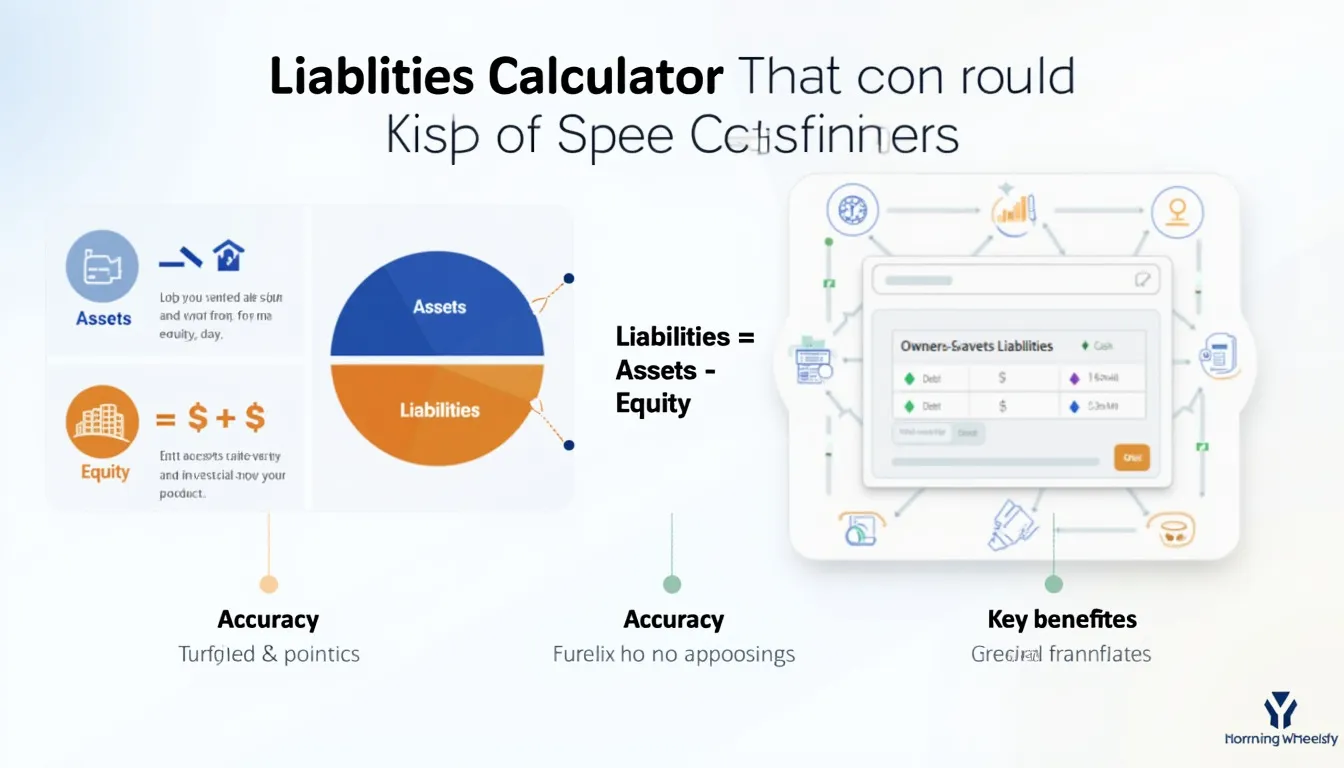Current Ratio Calculator
Is this tool helpful?
How to Use the Current Ratio Calculator Effectively
Our Current Ratio Calculator is a powerful tool designed to help businesses and financial analysts quickly assess a company’s short-term liquidity position. To use this calculator effectively, follow these simple steps:
- Locate the “Current Assets” input field and enter the total value of your company’s assets that can be converted to cash within one year. This includes cash, accounts receivable, inventory, and other liquid assets.
- In the “Current Liabilities” field, input the total value of your company’s liabilities that are due within one year. This typically includes accounts payable, short-term debt, and other current obligations.
- Click the “Calculate” button to generate your current ratio.
- Review the result and interpretation provided below the calculator.
The calculator will display your current ratio along with a brief interpretation of what this ratio means for your company’s liquidity position.
Understanding the Current Ratio: Definition, Purpose, and Benefits
The current ratio is a fundamental financial metric used to evaluate a company’s ability to pay off its short-term liabilities with its short-term assets. It’s a key indicator of a company’s financial health and operational efficiency.
The formula for calculating the current ratio is:
$$\text{Current Ratio} = \frac{\text{Current Assets}}{\text{Current Liabilities}}$$This simple yet powerful calculation provides crucial insights into a company’s liquidity, working capital management, and overall financial stability.
Purpose of the Current Ratio
The primary purpose of the current ratio is to assess a company’s ability to meet its short-term financial obligations. It helps stakeholders understand:
- Short-term solvency: Can the company pay its bills in the coming year?
- Operational efficiency: How well is the company managing its working capital?
- Financial flexibility: Does the company have enough liquid assets to handle unexpected expenses or take advantage of opportunities?
Benefits of Using the Current Ratio Calculator
Our Current Ratio Calculator offers several key benefits:
- Speed and Accuracy: Instantly calculate your current ratio without the risk of manual errors.
- Easy Interpretation: Receive an immediate interpretation of your results, helping you understand your company’s liquidity position at a glance.
- Comparison Tool: Quickly compare your company’s liquidity to industry benchmarks or historical performance.
- Decision Support: Use the results to inform financial decisions and strategies for improving working capital management.
- Investor Communication: Easily explain your company’s short-term financial health to potential investors or stakeholders.
Addressing User Needs and Solving Specific Problems
Our Current Ratio Calculator addresses several critical needs for businesses and financial professionals:
1. Quick Financial Health Check
In today’s fast-paced business environment, managers and analysts need rapid access to key financial metrics. Our calculator provides an instant snapshot of a company’s liquidity position, allowing for quick decision-making and strategy adjustments.
2. Risk Assessment
Creditors and investors use the current ratio to assess the risk associated with lending to or investing in a company. Our calculator helps these stakeholders quickly evaluate a company’s ability to meet its short-term obligations, informing their risk management strategies.
3. Benchmarking
Companies often need to compare their financial performance against industry standards or competitors. The Current Ratio Calculator facilitates easy benchmarking, allowing businesses to see how their liquidity measures up to others in their sector.
4. Trend Analysis
By regularly using our calculator, businesses can track changes in their current ratio over time. This trend analysis can reveal improvements or deteriorations in liquidity, helping managers identify potential issues before they become critical problems.
5. Educational Tool
For students and professionals learning about financial analysis, our calculator serves as an educational tool. It provides a hands-on way to understand how changes in current assets and liabilities affect a company’s liquidity position.
Practical Applications and Use Cases
To illustrate the practical utility of our Current Ratio Calculator, let’s explore some real-world scenarios:
Case Study 1: Retail Company Expansion
A mid-sized retail company is considering expanding its operations by opening new stores. Before making this decision, the management team uses our Current Ratio Calculator to assess their current liquidity position.
- Current Assets: $5,000,000
- Current Liabilities: $2,500,000
- Calculated Current Ratio: 2.0
The result indicates a strong liquidity position, suggesting the company has sufficient short-term assets to cover its liabilities twice over. This gives management confidence to proceed with their expansion plans, knowing they have a financial buffer to manage increased short-term obligations associated with growth.
Case Study 2: Manufacturing Company in Financial Distress
A manufacturing company is experiencing financial difficulties and needs to evaluate its short-term financial health. Using our calculator, they input the following:
- Current Assets: $1,200,000
- Current Liabilities: $1,500,000
- Calculated Current Ratio: 0.8
The result indicates that the company may have difficulty meeting its short-term obligations. This prompts management to take immediate action, such as negotiating extended payment terms with suppliers, accelerating accounts receivable collection, or seeking short-term financing to improve their liquidity position.
Case Study 3: Tech Startup Seeking Investment
A promising tech startup is preparing for a round of venture capital funding. To present a comprehensive picture of their financial health to potential investors, they use our Current Ratio Calculator:
- Current Assets: $800,000
- Current Liabilities: $400,000
- Calculated Current Ratio: 2.0
The 2.0 ratio demonstrates to investors that the startup has a solid liquidity position, potentially making it a more attractive investment opportunity. The founders can use this information to support their funding pitch and negotiate better terms with investors.
FAQ: Common Questions About the Current Ratio Calculator
Q1: How often should I calculate my company’s current ratio?
A1: It’s generally recommended to calculate your current ratio at least quarterly. However, for businesses with rapidly changing financial situations or those in industries with high seasonality, monthly calculations may be more appropriate.
Q2: What’s considered a good current ratio?
A2: A current ratio between 1.5 and 3.0 is generally considered healthy. However, ideal ratios can vary by industry. A ratio below 1.0 may indicate liquidity problems, while a ratio above 3.0 might suggest inefficient use of assets.
Q3: Can a high current ratio ever be bad?
A3: Yes, while a high current ratio generally indicates strong liquidity, an extremely high ratio (above 3.0) might suggest that the company is not efficiently using its current assets or not taking advantage of short-term financing options.
Q4: How does the current ratio differ from the quick ratio?
A4: The current ratio includes all current assets, while the quick ratio (also known as the acid-test ratio) excludes inventory from current assets. The quick ratio is considered a more conservative measure of liquidity.
Q5: Can the current ratio be manipulated?
A5: Yes, companies can potentially manipulate their current ratio by timing certain transactions near the end of a reporting period. For example, they might delay purchases or accelerate collections to temporarily boost their current assets.
Q6: How accurate is this Current Ratio Calculator?
A6: While we strive for accuracy, we can’t guarantee that the webtool or results from our webtool are always correct, complete, or reliable. Our content and tools might have mistakes, biases, or inconsistencies. It’s always recommended to verify results with professional financial advice.
Conclusion: Empower Your Financial Decision-Making
The Current Ratio Calculator is an invaluable tool for businesses, investors, and financial analysts seeking to quickly and accurately assess a company’s short-term liquidity position. By providing instant calculations and interpretations, this tool empowers users to make informed decisions about financial health, risk management, and strategic planning.
Key benefits of using our Current Ratio Calculator include:
- Rapid assessment of short-term financial health
- Easy comparison with industry benchmarks
- Support for investor communications and funding pitches
- Trend analysis capabilities for proactive financial management
- Educational value for students and professionals in finance
Whether you’re a seasoned CFO, a budding entrepreneur, or an curious investor, our Current Ratio Calculator provides the insights you need to navigate the complex world of corporate finance with confidence.
Take control of your financial analysis today – use our Current Ratio Calculator to gain valuable insights into your company’s liquidity position and make data-driven decisions for a stronger financial future.
Important Disclaimer
The calculations, results, and content provided by our tools are not guaranteed to be accurate, complete, or reliable. Users are responsible for verifying and interpreting the results. Our content and tools may contain errors, biases, or inconsistencies. We reserve the right to save inputs and outputs from our tools for the purposes of error debugging, bias identification, and performance improvement. External companies providing AI models used in our tools may also save and process data in accordance with their own policies. By using our tools, you consent to this data collection and processing. We reserve the right to limit the usage of our tools based on current usability factors. By using our tools, you acknowledge that you have read, understood, and agreed to this disclaimer. You accept the inherent risks and limitations associated with the use of our tools and services.







